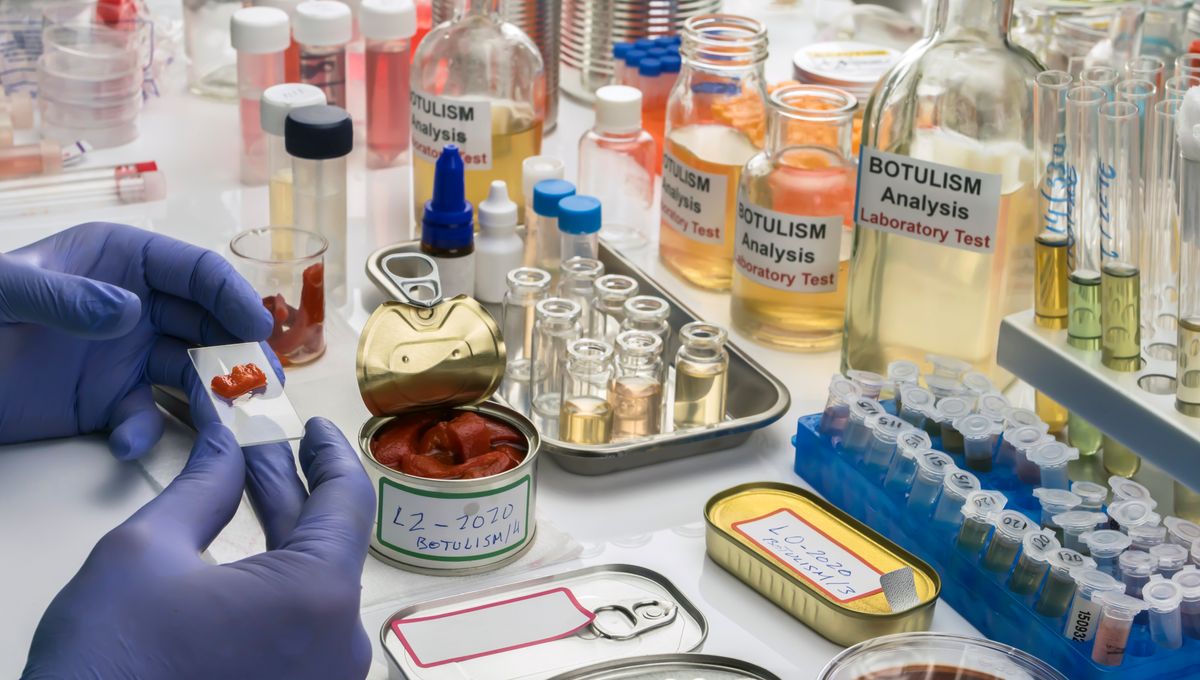
When one thinks of deadly chemicals, arsenic, cyanide, and strychnine often come top of the list – but what if we told you there are several chemicals at least a hundred times deadlier, and the one considered most lethal of all gets injected into nearly 3 million people every year?
The toxicity of substances is assessed using the LD50 (Lethal Dose, 50 percent) which refers to the amount needed to kill 50 percent of the test population. Quoted per kilogram of body weight, when ingested sodium chloride (salt) has an LD50 of 3,000 milligrams per kilogram, meaning it would take roughly 210,000 milligrams of salt to kill a person weighing 70 kilograms (154 pounds). Caffeine has an LD50 of 192 milligrams per kilogram, and sodium cyanide is 6.4 milligrams per kilogram.
Botulinum toxin, however, has an LD50 of 1 nanogram per kilogram, meaning it would take just 0.00007 milligrams to kill a 70-kilogram person. With a toxicity that high, it would take less than 2 kilograms (4.4 pounds) of the substance (ingested) to kill every human on Earth.
Botulinum toxin
Most substances have different toxicity levels based on how they are absorbed into the body, and these levels can vary quite drastically. While 1 gram of botulinum toxin can potentially kill 14,000 people when ingested, if injected, that same dose would kill 8.3 million people.
Taking just one molecule of the substance to stop one neuron from working, botulinum toxin is the most powerful known neurotoxin and it’s most commonly found in badly preserved food, flesh wounds, and cosmetic injections – although not in dangerous doses.
Botulinum toxins are produced by Clostridium botulinum, bacteria that under low-oxygen conditions can produce a number of toxins. It’s these toxins specifically that affect the nervous system, rather than the bacteria themselves.
First discovered in the 18th century, the name “botulism” is derived from the Latin botulus, meaning “sausage”, and referred to German medic Justinus Kerner’s description of the toxin as a sausage poison due to it predominantly being found in ill-preserved/prepared meats.
Types of botulism
C. botulinum spores are commonly found in soil and sea or river water, but when these spores gain access to a low-oxygen environment they start to grow and produce their dangerous toxins.
The toxins most commonly occur in canned food where bacteria have been allowed to enter the low-oxygen environment. They can also be found on food that hasn’t been prepared or stored properly, but both the bacteria and the toxins can be destroyed by high temperatures – so make sure you heat your food all the way through!
As neurotoxins, these toxins work by paralyzing nerve cells by disrupting their signals. Ingesting foodborne botulism can cause paralysis and respiratory failure, with fatigue, vertigo, weakness, and difficulty speaking being some of the early symptoms. With symptoms usually appearing within 12 to 36 hours after exposure, the mortality rate is high, with around 5 to 10 percent of cases proving fatal. Despite this, botulism cases are very rare and treatable if diagnosed early.
Infants under the age of 6 months are also at risk of infant botulism from eating spore-contaminated food as their gastrointestinal defences aren’t yet strong enough to prevent the bacteria from growing and producing toxins. It is for this reason that parents and carers are recommended not to feed honey to children under the age of 1 year.
Wound botulism can also occur when C. botulinum spores get into open wounds and able to grow due to the anaerobic environment. While rare, this form of botulism is predominantly associated with substance abuse cases, namely the injection of heroin. The symptoms are similar to foodborne botulism, but symptoms may take slightly longer to appear.
Inhalation botulism is also a rare but deadly risk. Usually occurring as a result of the toxins being released from aerosols, inhaling the toxins is markedly more dangerous than ingesting them, taking a far lower dosage to cause serious damage.
Due to its paralyzing properties, C. botulinum is used in cosmetic procedures under the name Botox. These treatments use a heavily diluted botulinum neurotoxin type A (onabotulinumtoxin A) and were first used in 1981 to treat people with strabismus (a condition in which the eyes point in different directions). Since then, this procedure has become the most common cosmetic procedure worldwide for its use in wrinkle prevention and anti-aging.
But, after learning about the potency of botulinum toxins, maybe those pesky forehead wrinkles aren’t all that bad.
Source Link: What’s The Most Dangerous Toxin On Earth?